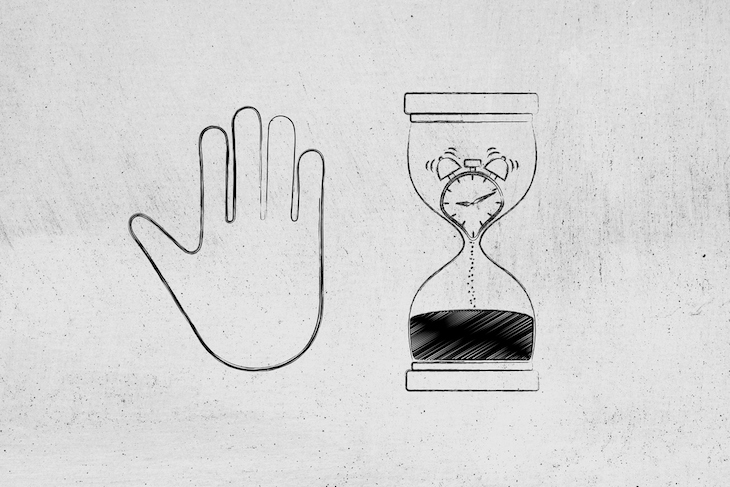There is a long and noble history of books about doing nothing. In the 5th century bc the sage Lao Tzu argued that the wise man should refrain from action, and Christ’s Sermon on the Mount also told us not to bother ourselves overmuch: ‘Consider the lilies of the field, they toil not.’
For Christ, idling was a spiritual and political position: he taught us to live in the moment and reject riches and status as a source of enlightenment or happiness. Now the self-help industry has taken idling and converted it into, paradoxically, a tool for productivity, i.e. getting ahead and making money, which is not what Christ had in mind.
The first in this trio of new studies of idling is published by Ted, purveyors of positive thinking for go-getters, and in the tradition of that series of online lectures, takes a few platitudes and spins them into an ‘inspirational’ guide for corporate ladder-climbers. When I read the word ‘inspirational’, I always wonder what exactly those inspired are being inspired to do. Is it to work harder for their boss?
In Praise of Wasting Time cites Mahler, Jung and Einstein as great achievers who used the power of idleness to work harder and achieve more. The author, a novelist, goes on to repeat a few familiar observations about today’s teenagers being hyperconnected and always on social media and so on. Downtime, by contrast, would lead to creative insights and give us a rest.
Lightman correctly identifies the Puritans as the progenitors of today’s anti-idling ethic. And, predictably, he recommends mindfulness as a solution. Compulsory mindfulness in schools is an idea that he moots. It seems that mindfulness is proposed as the answer to pretty much every social problem these days. I note that a new mindfulness app called Calm has just been valued at $250 million by Silicon Valley investors keen to make a fortune by selling Buddhism to the very people they stressed out with their anxiety-inducing technology.
I’ve always maintained that a few hours of mindlessness in the form of sleep or beer drinking is more likely to get us through rough patches.
Our second tome is an academic study of idleness and is very deep, way deep, so deep in fact as to be virtually unreadable. It seems aimed at a very specialist audience of tweedy professors and dons. And the kind of person who has read Herbert Marcuse.
Take for example this sentence chosen at random: ‘The objectivity of what we take ourselves to be is established through patterns of social interaction that we have seen Hegel define in the dialectic of master and slave as “recognition”.’
It is not, however, without charm. The author, a professor at Trinity College, Dublin, explores various philosophical treatments of idleness. He argues that Robert Burton, author of the bestselling self-help book of the 17th century, An Anatomy of Melancholy, whose success shows that depression is not a modern ailment, was against it. Burton reckoned it would lead to excessive brooding. It was better to keep busy and avoid introspection. ‘Be not solitary, be not idle’ was Burton’s injunction for depressives. Women are advised to amuse themselves with ‘curious Needle-workes’ and men should read books.
The author unfortunately leaves out one of the great idlers of all time, Dr Johnson. The great lexicographer and depressive was a fan of Burton’s book but altered its anti-idling message and adapted it into the more humane and convivial: ‘When solitary, be not idle. When idle, be not solitary.’
When the author has quite exhausted us with his talk of Hegelian dialectic and Kant-ian ethics, he introduces the blessedly chatty voice of Robert Louis Stevenson, who was pro-idling, and in the end he makes a good argument for idleness as freedom and not as a sort of bovine passivity — which is how Kant saw it.
The back cover blurb for On Doing Nothing, like In Praise of Wasting Time, sells idleness as a technique for increasing output: ‘This book reveals why idleness is essential to leading a productive and creative life.’ True idling, surely, would question this obsession with productivity? Why be productive anyway? What’s the point?
Within its pages we find, actually, not so much the promised Smilesian manual for young tradesmen but a personal and very sophisticated meditation on the author’s favourite practitioners of avant-garde and high art. Typical sentences: ‘Natsume Soseki wrote a three volume novel from the perspective of a cat called I Am a Cat.’ And: ‘Yayoi Kusama has applied her signature red dot patterns to the entire spectrum of artistic expression, from sculpture and paintings (on canvas and living beings) to performance art and environmental installations.’
There is lots to savour here, if you’re the type of person who, like me, has a soft spot for Roland Barthes and faintly pretentious writing. Nice pictures too.

























